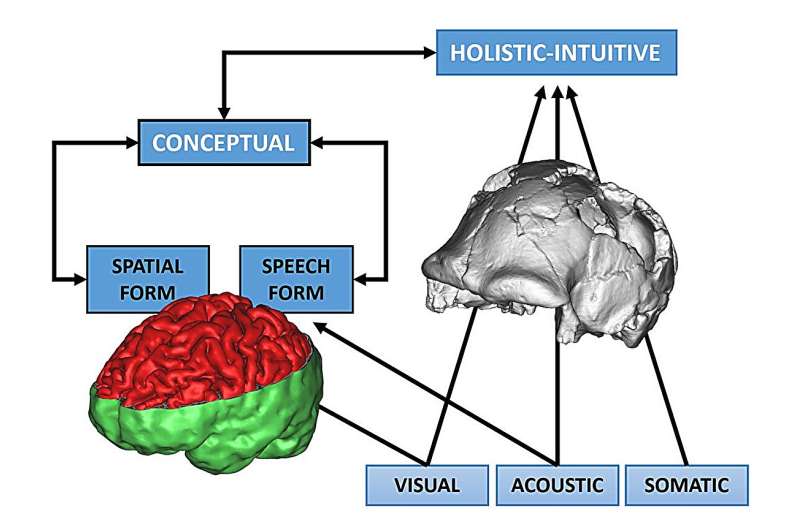This article has been reviewed according to Science X's editorial process and policies. Editors have highlighted the following attributes while ensuring the content's credibility:
fact-checked
proofread
Cognitive archaeology and the psychological assessment of extinct minds

This week, Emiliano Bruner, a paleoneurologist at the Centro Nacional de Investigación sobre la Evolución Humana (CENIEH), has published a wide-ranging review in the Journal of Comparative Neurology that describes the relationship between fossils and cognition following the tenets of cognitive archaeology, namely, by applying psychological models to those behaviors relevant to human evolution.
Evolution is based on multiple independent lineages, and fossil hominins might have possessed cognitive skills that modern humans have lost, or that never evolved. On this point, the frequency of certain behaviors is crucial because it is important to distinguish between responses and adaptations that are occasional and habitual. The complexity of the behavior must also be recognized in order to avoid generalizations that could obscure congruent cognitive changes.
This review work delves into the fronto-parietal system, working memory, visuospatial cognition, and attention. The modern human being has a social and technological complexity that suggests recent evolutionary changes in executive and attentional skills. "Many of our cognitive and cultural achievements are likely due to the fact that our attention is intentional, sustained, and conscious," says Bruner.
The paper also presents the role of the parietal cortex in consciousness, referring specifically to the precuneus, which is regarded as one of the principal integration centers for the neural networks as well as being involved in processes associated with memory and visuospatial integration. "The precuneus is like a 'projector' of our line of narrative, which integrates bodily and visual information," Bruner explains.
Finally, there is an introduction to John Teasdale's model of cognitive subsystems, founded upon two different forms of reasoning: Intuitive holistic (based on perception), and conceptual (based on phonological and image resources). The former is largely driven by online somatic and attentional factors, while the latter is based on offline information, working memory, and the default network. "This means we can ask whether extinct hominins might have availed of different combinations of the two subsystems," states Bruner.
This wide-ranging review concludes with a call for the use of experimental and quantitative methods in cognitive archaeology and underlines the importance of somatic, social, and technological elements when it comes to researching cognition, and especially for human primates.
More information: Emiliano Bruner, Cognitive archaeology, and the psychological assessment of extinct minds, Journal of Comparative Neurology (2024). DOI: 10.1002/cne.25583
Provided by CENIEH




















